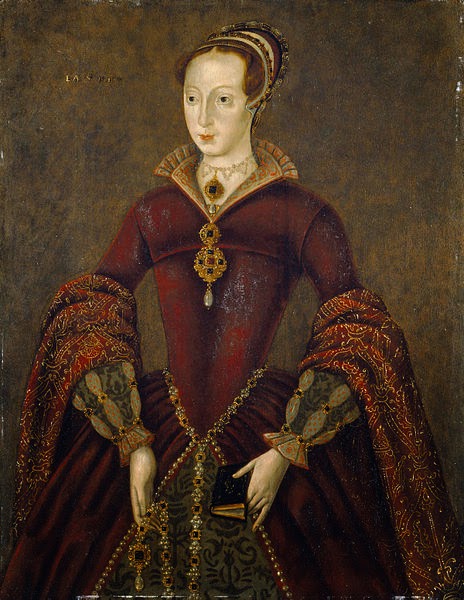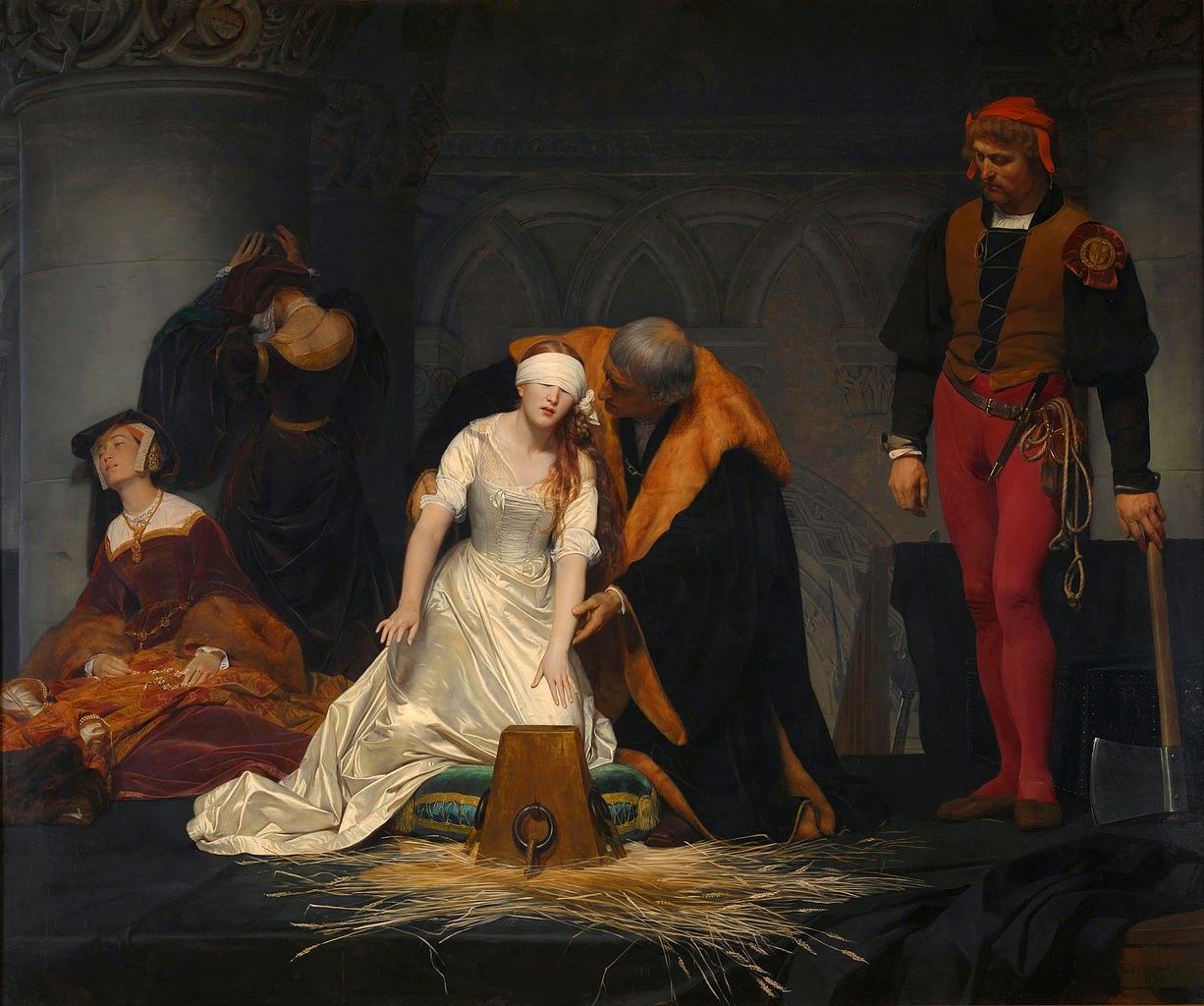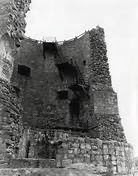 |
| The Streatham Portrait of Lady Jane Grey, Oil on oak panel, dated c.1590. Source: Wikimedia Commons |
In 1547, about age 11, she was sent to live in the household of Thomas Seymour, who married Henry VIII's widow, Catherine Parr. Not long afterward, Thomas was arrested by his brother, Edward Seymour, Lord Protector and 1st Duke of Somerset, who is believed to have felt threatened by Thomas' popularity with the young king. Thomas was eventually executed.
Lady Jane was afterward proposed as a bride for the Lord Protector's eldest son, but nothing came of it. In the spring of 1553, she was engaged to Guildford Dudley, a younger son of the 1st Duke of Northumberland, who had assumed the role if not the title of Lord Protector while the king was still a minor and was one of the most powerful men in the country. In June of that year, the teen-age king lay dying of consumption and congenital syphilis, passed down from his father, Henry VIII. A zealous Protestant, he named Jane as successor to the Crown in an amendment to his father's will, thus barring the claims of his devoutly Catholic half-sisters Mary and Elizabeth. He died on July 6, 1553, and 3 days later, Jane was informed that she was now Queen of England, and was officially proclaimed as such the following day. Aware that the nobility resented what they viewed as Northumberland's scheming to get his son on the throne, Jane insisted that her husband would not jointly be proclaimed king.
Immediately after the king's death, however, Mary, daughter of Henry VIII and his first wife, Katherine of Aragon, set out to begin gathering supporters. She was extremely popular with the public, and seeing a threat, the Duke of Northumberland left London with troops in mid-July intending to arrest her. He was defeated and the Privy Council switched its allegiance from Jane to Mary, proclaiming her queen in London on July 19. Jane was subsequently imprisoned in the Tower of London.
On August 3, Mary entered London and 19 days later, the Duke of Northumberland was executed. In September, Parliament declared Mary the rightful queen and revoked Jane's proclamation, making her an usurper. She and her husband, Guildford Dudley, were both charged with high treason, along with two of her brothers-in-law and Thomas Cranmer, former Archbishop of Canterbury. Not surprisingly, they were all found guilty and sentenced to death, although an imperial ambassador reported to Charles V, Holy Roman Emperor, that her execution would be stayed.
Circumstances changed, however, when a Protestant rebellion broke out in January 1554. Even though she had nothing to do with the rebellion, she was known as a staunch Protestant, and her father and two uncles did join the rebellion. On February 12, 1554, Jane's husband was executed first. After his remains were taken back to the Tower, Jane was taken out to the scaffold at Tower Green. She made a statement, recited Psalm 51, and blindfolded herself. She couldn't find the block until someone assisted her. The executioner asked her forgiveness, which she granted, and then Lady Jane Grey was executed. She was not yet 20 years old.
 |
| Ejecución de Lady Jane Grey by Paul Delaroche, 1833, Oil on canvas Source: Wikimedia Commons |
She and her husband were buried in the chapel of St. Peter ad Vincula on the north side of Tower Green. Her father, Duke of Suffolk, was executed 11 days later. Her mother remarried in 1555 and was allowed to live at Court with her two surviving daughters.
Sources: The Mammoth Book of British Kings & Queens by Mike Ashley, Carroll & Graf Publishers, Inc., New York, 1999, pp 637-638.
Wikipedia.org






